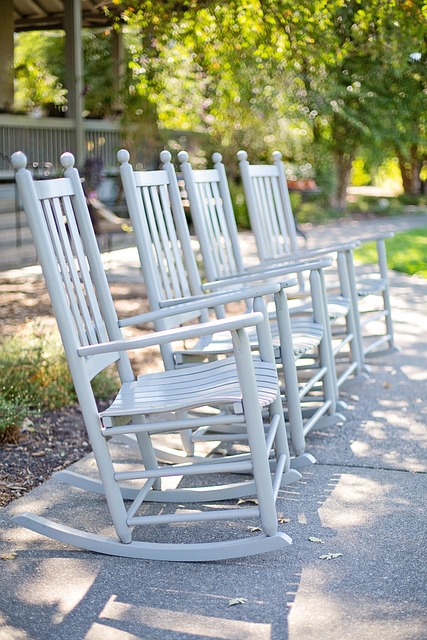by Eddie Pipkin

Image by congerdesign from Pixabay
When reading an article this week that contemplated which kinds of institutions do the best job of bringing rich Americans and poor Americans together in the same shared space, I thoroughly anticipated a shout-out to churches as a place to be celebrated for their egalitarianism. I regularly make the argument that churches are one of the last places that folks from all walks of life and all sorts of backgrounds hang out together and develop relationships. It turns out, however, that a recent study undercuts my argument. Churches aren’t necessarily bringing people together in the ways I thought they were. But guess who is? The Olive Garden.
The article I referenced is by Bloomberg opinion writer, Tyler Cowen: “What Harvard Can Learn from Olive Garden.” His premise is that “
There’s a disconnect between how we well-intentioned institutional leaders view our work and what clear-eyed neutral data identifies as true. None of these leaders (especially not church leaders) would describe themselves as elitist, but here is sufficient evidence, according to Cowen, to hopefully prod our perceptions:
At this point, I’m no longer surprised when I read a study detailing how inegalitarian some nonprofit institutions are. So I was pleasantly surprised to read an investigation that took a novel approach: It used geolocation data to examine which places are the best — and which the worst — at bringing rich and poor Americans together.
Unfortunately, museums scored especially poorly, and most of them are nonprofits. Nor do churches fare well, even though their rhetoric tends to be friendly to the poor. And many places in the for-profit private sector do that badly. Drug stores, for instance, tend to be local, and their customers reflect the income segregation of their neighborhoods.
The best at attracting customers from all income levels are chain restaurants — not necessarily fast-food places, but casual restaurants. The rich and poor in America only truly come together at places such as Olive Garden and Applebee’s.
Ah, museums, I get that, I find myself thinking – being the kind of person who loves a museum – I can totally see why some people would feel uncomfortable in that environment, even though the museums themselves have vision statements that promise (sincerely) to provide “access to art for all,” and they employ staff members whose mandate is to design activities and exhibits to expand that access. Still, by design, museum galleries feel like rarefied spaces. Their very purpose seems grand, if not elite, in a way that can be off-putting.
But churches? C’mon, everyone is welcome at church . . . aren’t they? That’s what we say – literally, that’s what we say, week in and week out, publicly for all to hear – but to Cowen’s point, what are we communicating below the shiny surface. And is the shiny surface itself exclusionary for some groups of people?
And why is it that Olive Garden is able to serve so well as a place of intersectionality. (The geolocation data reveals the truth of where people are gathering, causing us to rethink our optimistic narrative about where we think people are gathering.)
It’s not just the pasta. It’s the vibe.
The key, from Cowen’s perspective, is that these mid-level chains provide clearly defined menus of pretty good food in a casual environment, but the real key for the part where different socioeconomic groups hang out at tables next to one another is the way in which they have removed all signifiers of class status. If you’re like me, and you feel uncomfortable if the dining room gets a wee bit too fancy, that last sentence makes intuitive sense to you. The OG and the Applebee’s have found the sweet spot of creating a generically middle-class upscale setting that is friendly, welcoming, and accommodating, well-suited for either business lunches or group birthday outings and all sorts of other life events, including just a quick dinner out. Classy but casual.
We, too, in our ministry spaces, create a vibe. It’s up to us to be intentional about what that vibe is and how people experience it.
What subtle messages are we sending to guests about who belongs in our spaces? What overt messages are blatantly announcing to guests who is truly welcome and whose presence is suspect?
One of the very hardest things to do is be friendly and welcoming to guests without coming across as too pushy.
In fact, it’s even more complicated than it appears on the surface. It’s not just a matter of finding the perfect balance between those two poles. It’s really a matter of finding a way to customize the experience of guests, because what feels delightfully friendly and congenial to one person is guaranteed to feel oppressively overbearing to someone else.
Not everybody wants an over-the-top, glad-handing greeting. Some people want to quietly acclimate and observe before jumping in with both feet. (For the record, I am the kind of person who would rather slip into your worship service quietly and unobserved, noticed in a friendly manner but politely unengaged; my wife, on the other hand, would consider non-engagement to be a sign of a tepid welcome). Give people the option to determine their own level of engagement. This is why it’s important to have clearly demarcated hospitality stations and hospitality personnel: people know exactly where to turn if they want or need more info. Let people know, by explicit statement, that you are delighted they are with you and thrilled to engage them at whatever level they would like to engage, but that you’re happy to let them catch their breath before you grab them by the elbow and steer them into the 12-week discipleship small group. A classic example of how to do this well is to put guests in the driver’s seat in establishing if they would like a follow-up call or visit from the pastoral staff. Some people absolutely would love this (or need it). Some people would find it obtrusive. Ask the guest what they prefer. There’s no reason you can’t mail them a short note celebrating their time spent with you, but if they haven’t specified the desire for a call or visit, save that for further along in the relationship. Give people an extensive menu’s worth of options about how they would like to interact with you and your crew, and honor their preferences!
We should also help people identify easily and quickly our personality as a faith community. In reviewing the Skills Builder resources that we’ve developed and recently been writing about in this space, I noted this excellent paragraph from Phil Maynard. It captures a useful truth that we don’t acknowledge often enough:
Not Every Church Is a Good Fit for Every Person
Churches have personalities and passions and values and beliefs that may or may not match what a guest is looking for. Guests should not have to attend six months of worship to discover whether or not the church is a good match.
That statement marks a profound change in how we might think about guests who come through our doors. We tend to view ourselves as recruiters or home team boosters whose goal is to get people to sign up to join our team. It is an empathetic shift to instead think about guests as individuals whom we are helping to find the right spiritual fit for their unique needs. We might be the perfect place for them, or we might not be. What if instead of funneling all our efforts into “selling” them on why we’re the ultimate destination for them and their family, we instead value them for who they are and where they intersect meaningfully with who we are – and if we’re not the place for them, perhaps we can even provide them with some guidance of where such a place might be. Sacrilege, I know, but isn’t our goal to get people spiritually connected?
We are not, after all, Olive Garden. We do not exist to fill our spaces with happy customers and thereby generate ever-increasing revenue streams. Our mission is far deeper. Even though midscale restaurants might bring people routinely into the same room together, those people have only the most tangential interaction with the folks at the next table. We, on the other hand, are called to build meaningful relationships between the individuals within our spaces; we are looking to encourage people to share life together in substantial ways. We are working to affirm people and encourage people, while also challenging them to grow, sometimes making them uncomfortable in the process (which would be a thing a restaurant would avoid).
It is all about relationship building, but not everyone is on the same construction schedule. Different paces for different people, and we should provide ample options for guests to take things at the speed that is appropriate for them.
Has your ministry created a distinct vibe, welcoming to all and free of the hidden (or not so hidden messages) about who maybe is not so welcome after all? Do you give people lots of options for how they will interact, making them feel valued and safe while not being too heavy handed in recruiting ministry soldiers?
What do you think Olive Garden is getting right? What aspects of that question are useless and unhelpful in a ministry setting? You are welcome to share your thoughts! Truly.





Leave A Comment